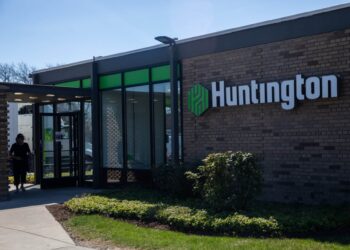How Lenders Should Respond to the Fed’s Rate Hikes

At the end of September, the Federal Reserve made good on its promise to increase interest rates by 0.25 basis points. According to Chairman Jerome H. Powell, the American economy is experiencing “a particularly bright moment.” The Fed stated that the decision to raise rates between 2% and 2.25% was not intended to get in the way of continued growth.
In fact, the benchmark interest rate is rising back toward a level the Fed regards as neutral, meaning that monetary policy is neither stimulating nor restraining economic growth. Fed predictions indicate that growth this year could top 3% before slowing in the coming years.
Unemployment remains low, the pace of investment has increased, and the Fed regards the current inflation rate of 2% as optimal. The rate hike was coupled with a new round of forecasts from members of the policymaking Federal Open Market Committee (FOMC), predicting the central bank would raise rates five more times by the end of 2020.
However, not everyone agrees. Higher interest rates increase the cost of federal borrowing, and some would prefer lower borrowing costs. In fact, some budget estimates indicate that with this latest hike in interest rates, the interest accrued on the federal government’s debt load will exceed the amount of the principal owed.
This is an unusual cycle in that it has been one of the longest recoveries in history and interest rates have remained at historic lows for years. The Fed is inching rates up slowly — and members of the FOMC are going out of their way to be as transparent about their decision-making process as possible. Others believe the Fed is also preparing monetary policy for the next recessionary period. With interest rates low, there are few ways for the Fed to respond in the event of another recession.
While there are differing opinions on the “value” of the Fed’s actions to raise interest rates, one fact remains. Higher interest rates do not benefit everyone. From increasing the base price of the vehicle purchased from the manufacturer to the rate hike for subprime loans, raising rates do not lift all boats.
Little Tweaks Matter
Any change in monetary policy can impact financial decisions made by everyone, from the largest investment banks to someone considering an auto loan. Because banks are free to set their own interest rates, some institutions use rates as a competitive opportunity.
Gaining new customers is a tough battle these days, and a competitive lender can capture business by offering a lower interest rate and potentially leave themselves open to increased risk, or by bundling consumer protection products into their auto loans.
Lenders that offer a limited, complementary protection program on their loans, like limited powertrain protection, demonstrate a superior commitment to their customers through expanded benefits. This helps set the stage for a more in-depth conversation on all the benefits a customer receives with their auto loan, increasing product upgrade potential and lender revenue streams.
Also, they help maintain a proactive risk-management strategy that may decrease repossessions and collection costs while enhancing loan volumes and increasing finance control.
In this highly competitive market, your value proposition is your differentiator. Excellent customer service and valuable consumer protection differentiate your loan offering while also building better, more loyal loan volume.
With more than 40 years serving as an industry innovator of consumer protection programs, EFG Companies is committed to the continuous development of innovative products and services paired with go-to-market strategies and execution support across a multitude of channels.
Find out how we can help increase your loan volume and performance while providing additional upsell opportunities to accelerate revenue growth. Contact EFG today.















